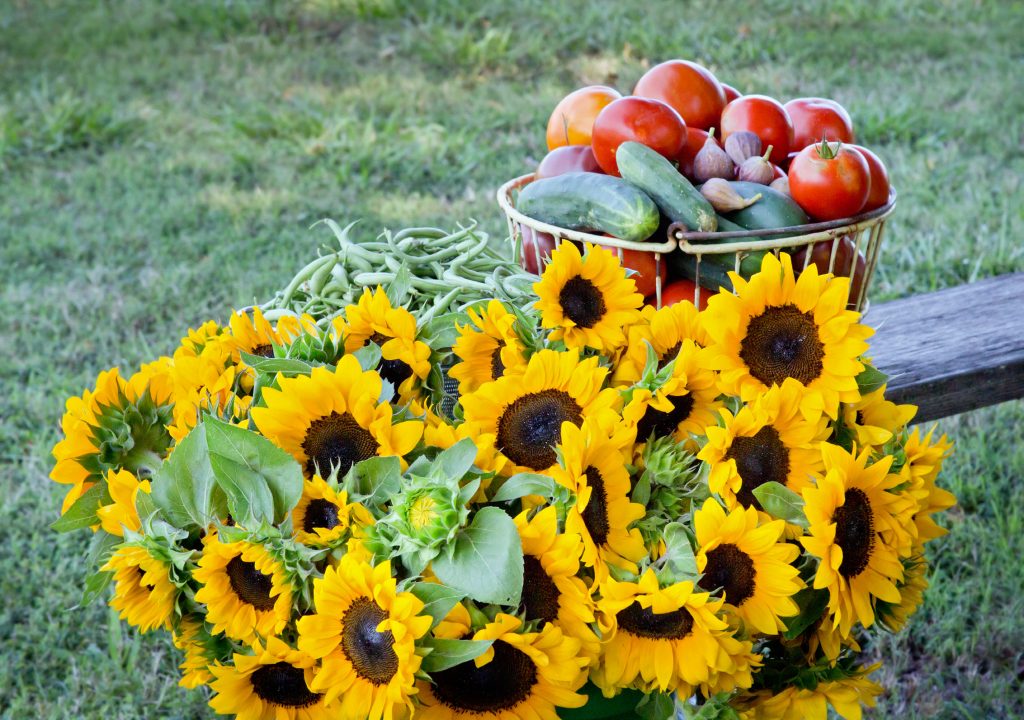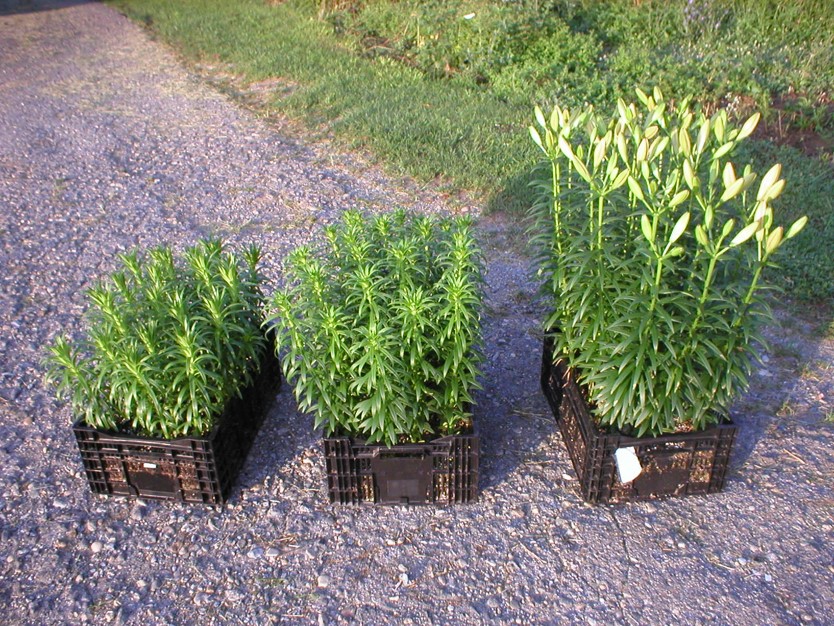
Photo, courtesy Lisa Ziegler, from Vegetables Love Flowers
Succession Planting is the method of planting the same crop, over, and over, and over, and over, throughout the season so you can harvest the same crop all season.
Succession planting is like compounded interest. The longer you do it, the higher the return.
The most common cut flower that is succession planted is sunflowers. Sunflower seeds are cheap, about $25.00 per 1,000 seeds, or about 2.5 cents per seed. Sunflowers sell for $1.00 to $2.00 per stem, depending on where, and how you sell them. (To a wholesaler, a retail florist, farmers market, etc.)
Example A One planting of 500 sunflower seeds on May 1st:
Stems Sold 400 x $1.50 = $600.00 (figure you will sell 80% of what you plant)
Example B Weekly succession planting of 500 sunflowers from April 1st though August 15th. 20 weeks, with 10,000 sunflowers planted. Start even earlier in March if growing in a high tunnel.
8,000 Stems Sold x $1.50 = $12,000.00
Planting 500 sunflowers every week vs just one planting, can create $11,400.00 in additional sunflower sales in one year.
That is a nice vacation, a new tunnel, and a big payment on the mortgage.
Sunflowers are a crop everyone should be succession planting weekly.

Bulb Crops to Succession Plant:
There are other crops that should be succession planted. Growers often overlook succession planting when it comes to cut flowers grown from bulbs. Here is a brief list of bulb crops that should be succession planted. These can be field grown, or crate grown in a tunnel or greenhouse.
Gladiolus Corms are planted weekly, starting a week before the last spring frost, and continuing until 12 weeks before the first fall frost. This allows for ten weekly plantings.
Lilies Bulbs are planted every two to three weeks, starting three weeks before the last spring frost, and continuing until 12-14 weeks before the first fall frost. This allows seven to nine plantings.
Callas Bulbs are planted every four weeks, starting as the last frost date, and continuing until ten weeks before the first fall frost. This allows for three plantings per year.

For more on what to plant in summer for fall harvest request my free webinar Getting Down to Flower Farming Business for Fall with Lisa Mason Zieglerthat includes lots of great flower farming tips and ideas here.
If you want to learn more on growing cut flower bulb crops, as well as profitable perennial and woody crops checkout my online course Flower Farming School Online: Bulbs, Perennials, Woodies, and More! We are offering a special run of the course in late summer, in time for fall planting of bulbs and other crops for harvest next spring. Online registration is June 21-26 and School runs July 10 through August 14. Sign up HERE to be notified when registration opens, and you will receive a special early bird offer for the course.
Growing a consistent supply of flowers with succession planting and adding bulb, perennial and woody varieties will allow you to offer more flowers to your customers, increasing farm income and customer loyalty. Anything you do to make your flower farming business better will give you an edge over the competition.

